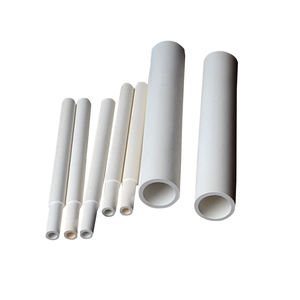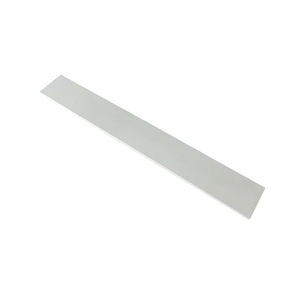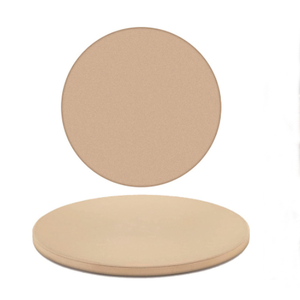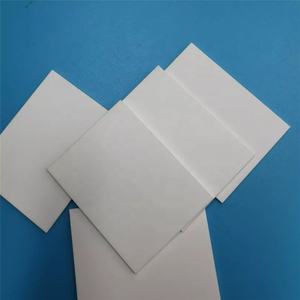Professional industry ceramic supplier, silicon nitride, silicon carbide, aluminum nitride and any other kinds of ceramics.
PRODUCT PARAMETERS
Description
Overview of The Future of Materials: Hbn Boron Nitride Ceramics for Cutting-Edge Industries
The Future of Materials: Hbn Boron Nitride Ceramics for Cutting-Edge Industries ceramics are a class of advanced technical ceramics, often referred to as “white graphite.” They are renowned for their unique combination of properties, including high thermal conductivity, excellent electrical insulation, and outstanding thermal shock resistance. Available in various forms such as hot-pressed solids, coatings, and composites, BN ceramics are critical in demanding applications across aerospace, electronics, and metallurgical industries.
Features of The Future of Materials: Hbn Boron Nitride Ceramics for Cutting-Edge Industries
-
High Thermal Conductivity: Offers excellent heat dissipation, similar to metals, while maintaining electrical insulation.
-
Excellent Thermal Shock Resistance: Withstands extreme and rapid temperature changes without cracking.
-
Superior Electrical Insulation: Maintains high resistivity even at elevated temperatures.
-
Low Dielectric Constant and Loss: Ideal for high-frequency and microwave applications.
-
Good Chemical Inertness: Resists attack from most molten metals, slags, and salts.
-
Non-wetting and Non-reactive: With many molten metals like aluminum and copper.
-
High Temperature Stability: Can be used in inert or vacuum atmospheres up to 3000°C.
-
Machinability: Can be precision-machined into complex shapes using conventional tools, unlike many other advanced ceramics.
Specifications of The Future of Materials: Hbn Boron Nitride Ceramics for Cutting-Edge Industries
Hexagonal boron nitride ceramics, often called HBN or white graphite, deliver exceptional performance where regular materials fail. They handle extreme heat easily. HBN parts withstand temperatures soaring past 3000°C without melting or weakening significantly. This makes them perfect for intense furnace environments. They also resist thermal shock extremely well. Parts won’t crack when rapidly heated or cooled. This reliability is critical for demanding processes.
HBN offers superb electrical insulation. It keeps electricity from flowing even at very high temperatures. This property is vital for semiconductor manufacturing equipment. HBN components won’t short-circuit sensitive electronics. They also act as strong barriers against molten metals. Crucibles and liners made from HBN safely contain liquid aluminum or steel without reacting. This prevents contamination.
Machining HBN is surprisingly simple. Its layered structure lets it be cut and shaped precisely using standard tools. You get complex parts without needing expensive diamond machining. This saves significant time and money. HBN surfaces stay smooth. They don’t stick to molten glass or metal. This ensures clean release and reduces downtime for cleaning. HBN parts last much longer than alternatives.
These properties drive adoption across advanced industries. Aerospace uses HBN for high-temperature sensors and coatings. Semiconductor tools rely on HBN insulators and crucibles. Glassmakers use HBN for molds and delivery systems. Metal processors depend on HBN for liners and thermocouple protection. HBN ceramics are enabling the next generation of technology. They provide the thermal stability and electrical isolation needed for progress. Expect HBN solutions in more extreme applications soon.
Applications of The Future of Materials: Hbn Boron Nitride Ceramics for Cutting-Edge Industries
Hexagonal boron nitride ceramics solve tough problems in demanding industries. This material handles extreme heat and electricity differently than most ceramics. It moves heat away fast but stops electric current completely. This combination is rare and valuable.
Semiconductor makers need HBN badly. Tiny computer chips generate intense heat during production. HBN parts safely hold these hot chips. They also insulate delicate circuits from stray electricity. Without HBN, making smaller, faster chips gets much harder.
Aerospace and defense push materials to the limit. Jet engines and rocket parts face scorching temperatures. HBN liners and coatings survive this heat. They protect sensitive components inside. Their light weight helps too. Every gram saved matters for flight.
Factories use HBN for high-temperature jobs. It shapes molten metal and glass without sticking or wearing out. HBN crucibles last longer than other materials. This saves money on replacements and factory downtime. Production lines keep running smoothly.
Even consumer electronics benefit. Phones and computers need better heat control as they shrink. HBN sheets spread heat inside tight spaces. This prevents overheating and keeps devices reliable. Battery safety also improves with HBN barriers.
Company Profile
Tanki New Materials Co.Ltd. focus on the research and development, production and sales of ceramic products, serving the electronics, ceramics, chemical and other industries. Since its establishment in 2015, the company has been committed to providing customers with the best products and services, and has become a leader in the industry through continuous technological innovation and strict quality management.
Our products includes but not limited to Aerogel, Aluminum Nitride, Aluminum Oxide, Boron Carbide, Boron Nitride, Ceramic Crucible, Ceramic Fiber, Quartz Product, Refractory Material, Silicon Carbide, Silicon Nitride, ect. please feel free to contact us.

Payment Methods
T/T, Western Union, Paypal, Credit Card etc.
Shipment Methods
By air, by sea, by express, as customers request.
5 FAQs of The Future of Materials: Hbn Boron Nitride Ceramics for Cutting-Edge Industries
The Future of Materials: HBN Boron Nitride Ceramics FAQs
What makes HBN ceramics special?
HBN ceramics handle extreme conditions. They withstand heat incredibly well. They resist chemical corrosion strongly. They also manage heat flow directionally. This mix is rare in other materials.
Where are HBN ceramics used most?
They are vital in demanding fields. Semiconductor manufacturing needs their heat management. Aerospace uses them near engines. Nuclear applications rely on their stability. Crucibles for melting metals depend on them.
Is HBN hard to work with?
Machining HBN takes special care. It behaves differently in different directions. This requires specific cutting tools. Expert handling is essential. The results are worth the extra effort.
Why does HBN cost more?
Producing pure HBN is complex. It demands high temperatures and pressures. The raw materials are expensive. The precision manufacturing adds cost. This investment pays off in performance.
What’s next for HBN ceramics?
Research pushes HBN further. Scientists improve its toughness. They explore new composite forms. Production methods are getting more efficient. HBN will enable even more advanced technologies.
REQUEST A QUOTE
RELATED PRODUCTS

Boron Nitride Ceramic Discs with Excellent High-Temperature Resistance for The Battery Industry

Industry Ceramic Good Quality Boron Nitride Ceramic Boat

Factory Customized Bn Disc Boron Nitride Ceramic

Low Thermal Expansion Boron Nitride Ceramic Parts

Refractory Hexagonal Boron Nitride Ceramic Products



